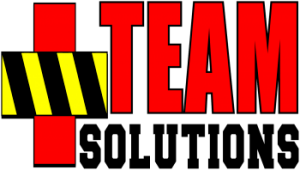Each morning that I’m in town I spend precious time with my elementary aged son during the daily processional known as “getting ready for school”.
And to be sure, it is not a perfect process. Some days are over run with a struggle to get out of bed, to eat a healthy breakfast, to have all of the required materials in the backpack, etc. Hmmm … kind of like me before an early flight! A familiar process occurs in households around the world too no doubt.
Unfortunately, one of the other activities (read: distractions) my son occasionally gets involved with during this process is playing with some of his oh-so-distracting shiny toys instead of getting ready. In the space / time continuum, this distraction requires us to rush out the door, usually at the cost of the precious part of the aforementioned ‘precious time’.

We seem to always get to school before the bell rings, but the continuous improvement part of my brain does not feel the joy. And that got me thinking …
Strategy without tactics is the slowest route to victory. Tactics without strategy is the noise before defeat.
~Sun Tzu
The tactics involved in accomplishing an objective are seldom conjoined. Yet they should be. Whether forging ahead with an enterprise-wide initiative or trying to get a first-grader out of the door on schedule, merely pursuing each piece of the puzzle without the cohesive effects of a good strategy seldom satisfies. Let’s break it down:
[ezcol_1half]
“Go to School” Example #1
Objective: What are objectives? But it will work out! Who has time for that?!?
NO Strategy
Tactic 1 – wake up (late, grumpy and unfocused)
Tactic 2 – throw some food down the gullet
Tactic 3 – grab and go school backpack without lunchbox
Tactic 4 – race to school with little or no positive conversation
Objective Met? Eh? What’s that again?
[/ezcol_1half]
[ezcol_1half_end]
“Go to School” Example #2
Objective: Arrive on time, be emotionally connected and be prepared
Strategy: plan ahead, stay flexible
Tactic 1 – Agree to leave by X to arrive on time at Y (adjust alarm accordingly)
Tactic 2 – Converse and connect over breakfast
Tactic 3 – Pack lunch and check school materials
Tactic 4 – Converse and connect on way to school
Objective Met? You bet!
[/ezcol_1half_end]
Simplistic? Of course. In the examples though, the same number of steps were required yet the presence of – and agreement to – effective objectives and strategy makes Example #2 the clear choice. Assuming that the project’s success is the end game, right?
Because Example #1 doesn’t have any strategic objectives, all subsequent activities are conducted in isolation of one another. And activities pursued without considering the impact to the strategic objectives are no different than being distracted by a shiny toy.
Now let’s look at how this impacts our business endeavors by looking at a sample project:
Objective (WHAT and WHY): Combine 4 complementary but separate initiatives: 1) software 2) equipment to run the software 3) staff to run the equipment and 4) new workspace to house the staff and equipment into 1 unified project to increase efficiency, understanding and competency
Strategy (Higher Level HOW): Communicate the road map to all stakeholders, establish expectations and provide focussed leadership
Tactics (Lower Level HOW): 1) Deliver staff training on key aspects on each initiative, 2) communicate the connective aspects of each initiative, 3) unify project goals through refresher training
Shiny Toy Alert! Senior manager buys new computer equipment on closeout without referring to the strategic objectives. Such a deal! Outcome: Equipment doesn’t meet software specifications and can’t be returned since they were bought on closeout.
Shiny Toy Alert! Human Resources spends the remainder of their budget on a job fair that targets new graduates without referring to the strategic objectives. Outcome: Project needs people with at least 5 years experience in the software and equipment. Now there’s no budget left to recruit them!
Shiny Toy Alert! Facilities manager builds out some workspace for the new people and equipment without referring to the strategic objectives. Outcome: Space does not have the wiring or the space needed to fulfill requirements and must be redone.
It doesn’t take a math major to figure out that not having or not referring to the strategic objectives can be extremely expensive and wasteful. And preventable.
Leaders establish the vision for the future and set the strategy for getting there; they cause change. They motivate and inspire others to go in the right direction and they, along with everyone else, sacrifice to get there.
~John Kotter
Strategic objectives may not be as fun or captivating as a shiny toy … but which one will take your organization farther?
Mike McKenna is the president and chief consultant of TEAM Solutions. He advises organizations of all sizes how to better achieve their objectives via strategic, sensible and value added guidance. Contact to learn more.
Engage on Twitter: @TEAM_Solutions
Engage on Google+: +MikeMcKenna
[shareaholic app=”recommendations” id=”12206770″]
